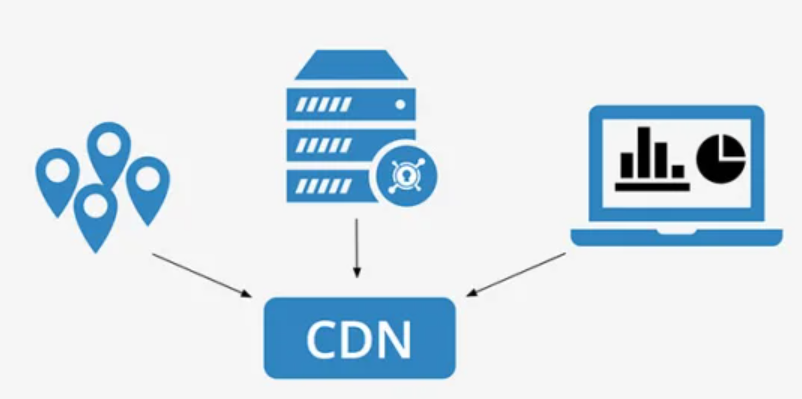Global CDN Coverage: How to Choose the Right CDN Service for International Users

As businesses expand globally and more users access content from different parts of the world, Content Delivery Networks (CDNs) have become essential for providing a seamless user experience. A global CDN ensures that your website or application performs optimally, no matter where your users are located. But with many CDN providers offering varying levels of coverage, how do you choose the right one for international users?
In this article, we’ll explore the importance of global CDN coverage, the factors to consider when choosing a CDN for an international audience, and how to maximize website performance across different regions.
What is a Global CDN?
A global CDN is a network of servers distributed across various geographic locations to deliver web content efficiently to users around the world. CDNs work by caching content on edge servers located closer to users, reducing latency and improving load times. With a global CDN, content like images, videos, HTML, and even dynamic web content is served from the nearest server, ensuring faster delivery and better website performance.
Why Global CDN Coverage Matters for International Users
When your website or application targets an international audience, users from different regions may experience slower load times if your content is served from a distant server. This can lead to increased bounce rates, poor user experience, and potentially lower search engine rankings. A global CDN addresses this by:
Reducing Latency: The farther the server is from the user, the longer it takes for data to travel. A global CDN places edge servers near key geographic areas, ensuring that users receive content as quickly as possible.
Enhancing Website Performance: By caching content on edge servers closer to the user, global CDNs can significantly reduce page load times and improve overall site performance.
Optimizing International User Experience: As internet speeds and connections vary by region, a CDN can adapt to deliver the best performance, whether users are accessing your site from North America, Europe, Asia, or any other part of the world.
Ensuring Content Availability: Global CDN coverage ensures that content is available even in the event of server downtime or network congestion. This is crucial for maintaining continuous service across international markets.
Key Factors to Consider When Choosing a CDN for International Users
Choosing the right CDN for your international audience is critical for optimizing global website performance. Here are some key factors to consider when evaluating CDN services for global coverage:
1. Server Locations and Coverage
One of the most important factors when selecting a CDN is the number and strategic placement of its edge servers. Look for a CDN provider with a widespread network of servers in key global regions, especially in areas where your international users are located. A CDN with extensive coverage in North America, Europe, Asia, and other high-demand regions can deliver content more efficiently to a global audience.
For example, if your target audience is in Asia but your current CDN provider has few servers in the region, users may experience slower load times due to the distance between the origin server and the edge server.
2. Dynamic Content Caching and Optimization
While static content (such as images and videos) can easily be cached at the edge, dynamic content (such as user-specific data or real-time information) requires more sophisticated optimization. Look for a CDN that supports dynamic content caching and can optimize both static and dynamic assets for global delivery.
Some CDNs provide features like Edge Computing or Serverless Computing, allowing for faster processing of dynamic content closer to the user, improving website responsiveness across regions.
3. Global Load Balancing
Effective global load balancing ensures that user requests are routed to the nearest and least congested server, regardless of where they originate. This helps to maintain consistent performance and prevent latency spikes, especially during traffic surges.
A global load balancer can dynamically direct traffic to different edge servers based on factors such as server health, geographic proximity, and current network conditions, ensuring that users always have the best experience possible.
4. CDN Security Features
Security is a top concern for websites with international users, especially when handling sensitive data like customer information or financial transactions. Choose a CDN provider that offers SSL/TLS encryption, DDoS protection, and Web Application Firewall (WAF) to safeguard your website from cyber threats across global markets.
Some CDNs also offer features like Bot Mitigation, which is crucial for preventing malicious bots from attacking websites, especially those with high international traffic.
5. Content Delivery Speed
While all CDNs promise to improve speed, not all CDNs are created equal. Evaluate the CDN’s ability to deliver content at high speeds, regardless of the user’s location. Test the CDN’s performance in different regions to ensure that users from around the world experience fast and consistent load times.
You can also check for features like HTTP/2 and QUIC protocol support, which can help improve the delivery speed of content, especially for mobile users.
6. Pricing and Scalability
Global CDN coverage can be more expensive than regional or local CDN services, so it’s important to balance cost-effectiveness with performance. Consider the pricing model of the CDN provider and how it scales with your business growth. Some CDNs offer pay-as-you-go pricing, while others offer tiered pricing based on usage.
Look for a CDN provider that offers flexible plans that can scale with your growing international audience, ensuring that you only pay for the resources you use.
Top Global CDN Providers for International Users
Several CDN providers offer global coverage and are well-suited for international users. Here are a few of the top choices:
Amazon CloudFront
AWS CloudFront offers a robust network of edge servers across the world, delivering both static and dynamic content. With seamless integration with other AWS services and advanced security features, it’s ideal for global websites.Cloudflare
Cloudflare has a massive global network and offers a range of performance and security features, including global load balancing, DDoS protection, and content optimization. It’s particularly known for its free tier for smaller websites.Akamai
Akamai is one of the most established CDN providers, with one of the largest and most widely distributed networks. It offers excellent global coverage and advanced features for dynamic content delivery.Fastly
Fastly is known for its real-time content delivery and dynamic caching capabilities. Its high-performance edge network makes it a great choice for websites with complex and dynamic content that need to be served quickly to international users.
Conclusion
Choosing the right CDN for international users is crucial for ensuring optimal performance, fast load times, and a seamless user experience across the globe. By considering factors such as server locations, global load balancing, dynamic content optimization, and security features, you can select the best CDN that meets the needs of your international audience.
Investing in a global CDN not only improves website performance but also enhances user satisfaction, increases engagement, and boosts your website’s credibility in international markets.

